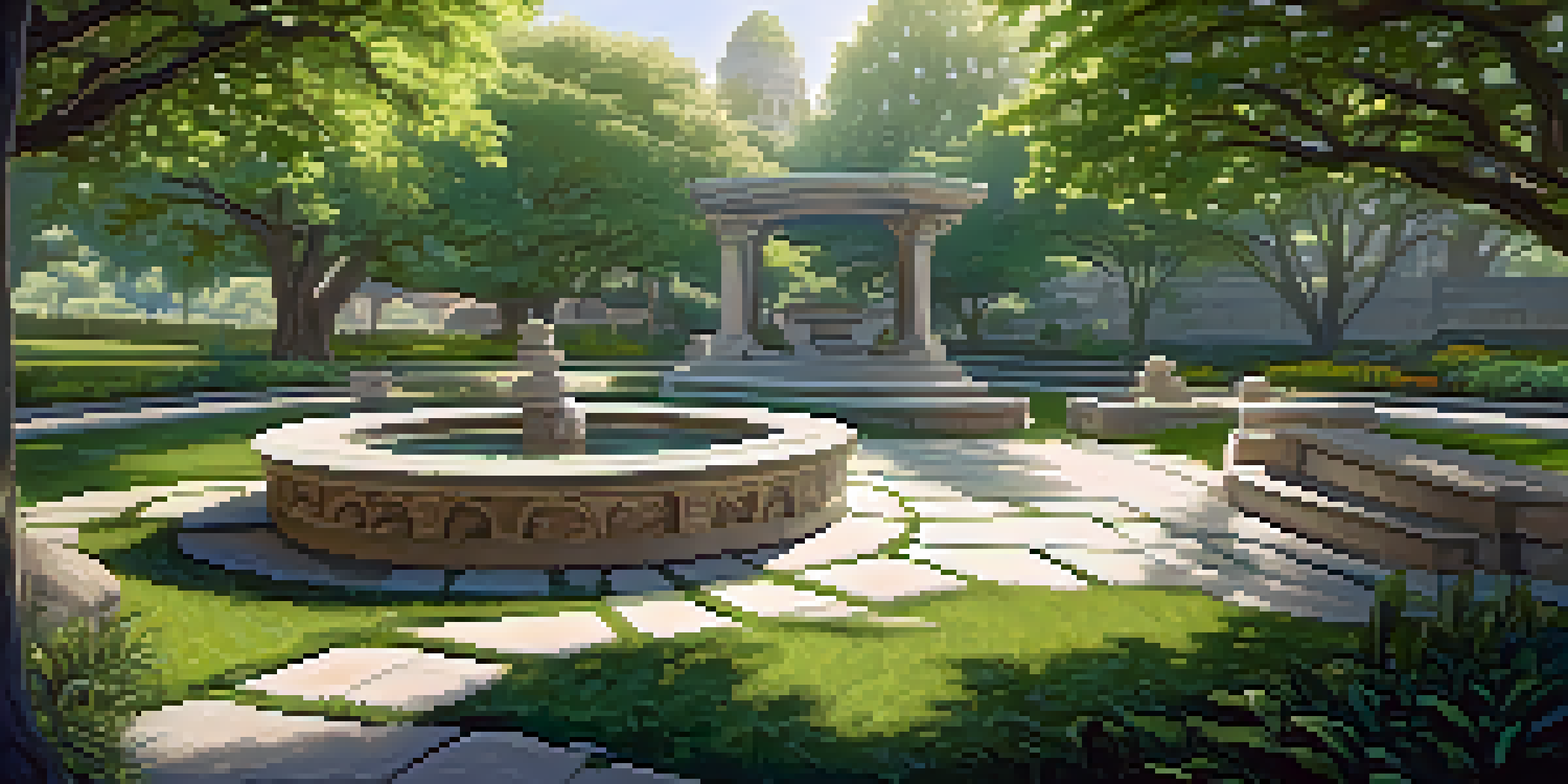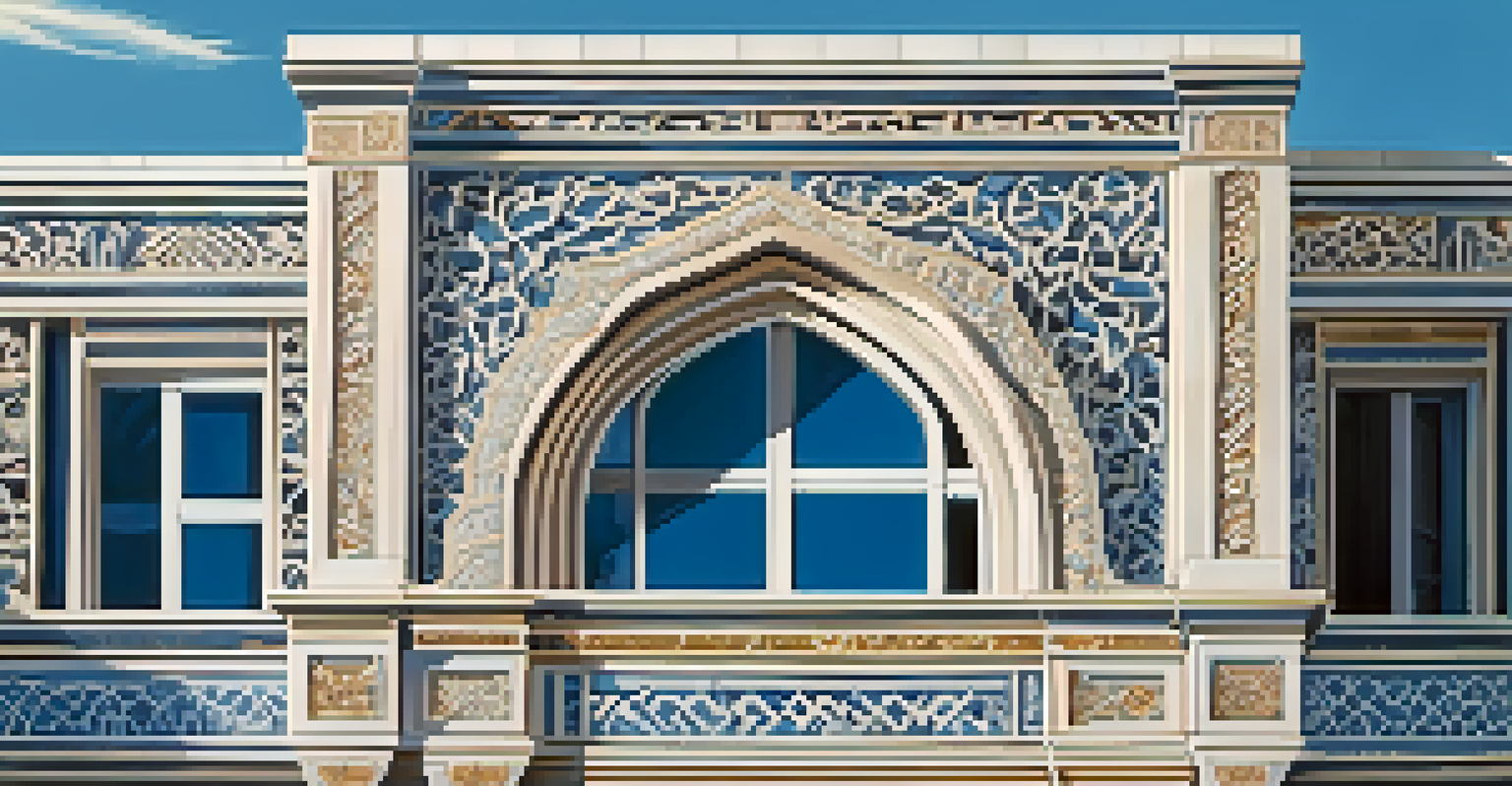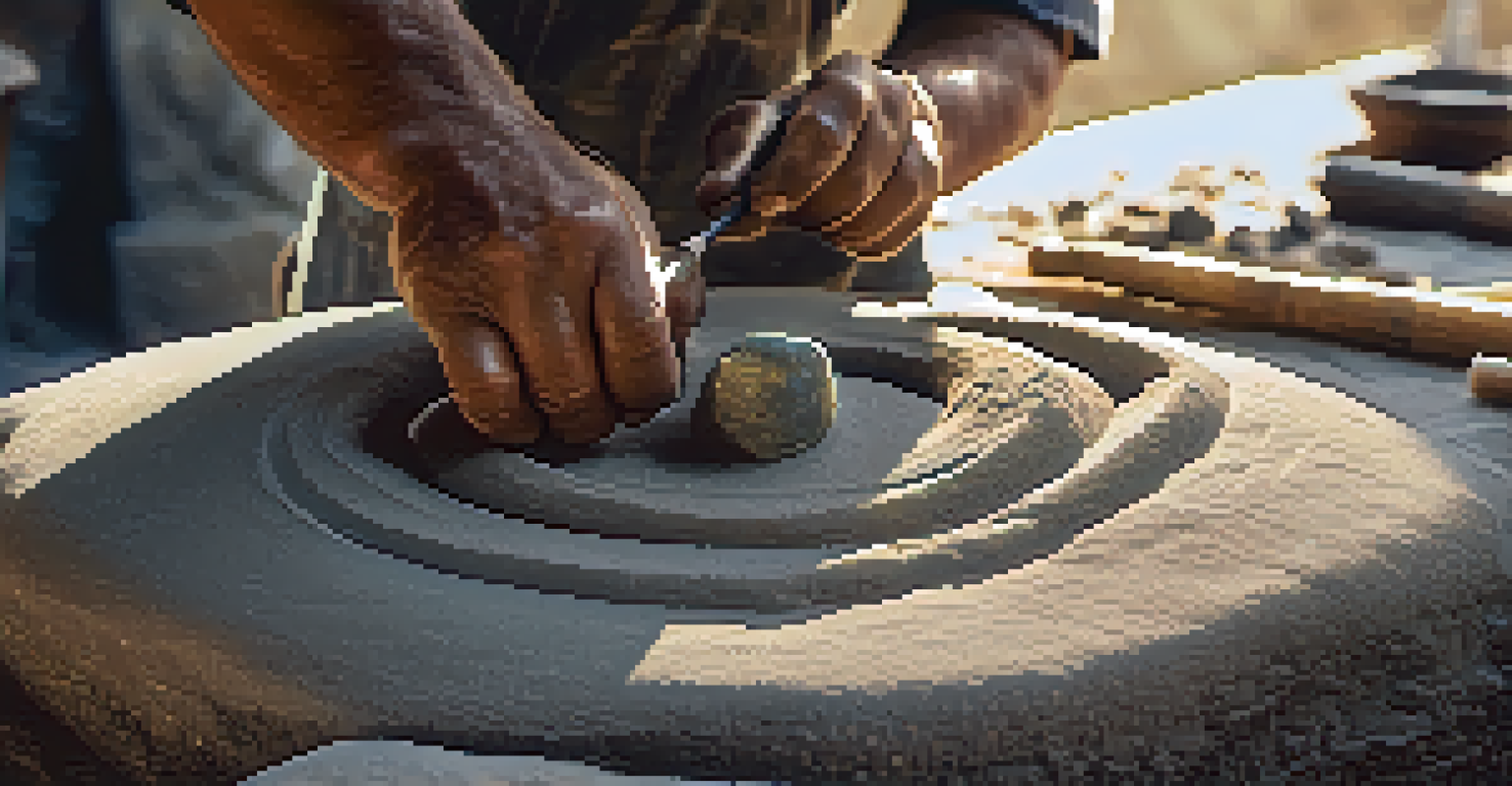The Role of Stone Carving in Modern Architecture and Design

The Historical Significance of Stone Carving
Stone carving has been a revered art form for thousands of years, shaping the very foundations of architectural beauty. From ancient temples to grand cathedrals, the intricate details created by skilled artisans have left a lasting legacy. This rich history informs modern practices, reminding us of the timelessness and durability of stone as a material.
Art is not a thing; it is a way.
In contemporary architecture, stone carving is not just a nod to the past; it serves as a bridge between tradition and innovation. Architects today often draw inspiration from historical techniques while incorporating modern technology. This blend creates structures that resonate with both historical significance and modern functionality.
For example, the use of locally sourced stone can evoke a sense of place, paying homage to the heritage of a region. As architects embrace the artistry of stone carving, they're not just constructing buildings; they're crafting narratives that connect us to our cultural roots.
Stone Carving as a Sustainable Choice
Sustainability is a hot topic in architecture, and stone carving offers a unique solution. Stone is a natural resource that, when sourced responsibly, has a low environmental impact. Unlike synthetic materials that may degrade over time, stone can last for centuries, reducing the need for replacements and repairs.

Moreover, the energy required to produce stone carvings is significantly lower than that for many modern building materials. This efficiency makes it an appealing choice for architects seeking to minimize their carbon footprint. By opting for stone, designers are not only making an aesthetic choice but also a commitment to environmental stewardship.
Stone Carving Blends Tradition and Tech
Modern architects are merging historical stone carving techniques with advanced technology to create innovative and functional designs.
Take, for instance, the resurgence of stone in public spaces, where durable stone benches and walkways are designed to withstand the test of time. This shift towards sustainable materials highlights the growing awareness of our ecological responsibilities while maintaining an appreciation for beauty.
The Aesthetic Appeal of Stone Carving
One cannot discuss stone carving without acknowledging its aesthetic allure. The textures, colors, and patterns found in stone provide a unique sensory experience that other materials often can't match. This natural beauty allows architects to create visually stunning structures that stand out in urban landscapes.
Sustainability is not a destination, but a journey.
In modern design, stone can be used in various forms, from grand facades to delicate interior details. The interplay of light and shadow on carved surfaces adds an element of dynamism that changes throughout the day, creating a living piece of art. This ability to evoke emotion through stone is what makes it a favored material among contemporary designers.
Consider the use of carved stone in luxury homes or public monuments, where the craftsmanship speaks volumes about the values of quality and permanence. Such applications not only enhance the beauty of a space but also invite admiration and reflection from all who encounter them.
Integrating Stone Carving with Modern Technology
The integration of technology in stone carving is revolutionizing the field, making it more accessible and precise. CNC (computer numerical control) machines and 3D modeling software allow for intricate designs that were once unimaginable. This fusion of ancient techniques with modern technology enables architects to push creative boundaries.
For instance, architects can now create complex patterns and shapes with a level of detail that enhances the overall design. This not only streamlines the carving process but also allows for rapid prototyping, enabling designers to visualize their ideas before they become reality. The result is a more collaborative and innovative approach to architecture.
Sustainability Drives Material Choice
Stone carving is a sustainable architectural choice, offering durability and low environmental impact compared to synthetic materials.
Moreover, this technological advancement doesn’t diminish the artistry of stone carving; rather, it enhances it. Skilled artisans can now focus on the creative aspects of their work, using technology as a tool to bring their visions to life, ensuring that tradition and innovation coexist harmoniously.
Cultural Expressions Through Stone Carving
Stone carving is a powerful medium for cultural expression, reflecting the identity and values of a community. In modern architecture, this is particularly evident in public spaces where carved stone elements tell the stories of local heritage. These artistic features serve as reminders of the past and as symbols of pride for future generations.
Architects often collaborate with local artisans to incorporate culturally significant motifs and designs into their projects. This not only enriches the architectural landscape but also fosters a sense of belonging among residents. By celebrating local culture through stone carving, designers create spaces that resonate with the people who inhabit them.
An example can be seen in community centers that feature stone carvings representing local history or folklore. Such structures become more than just buildings; they transform into cultural landmarks that educate and inspire, bridging the gap between the past and the present.
The Role of Stone Carving in Landscape Architecture
Stone carving plays a significant role in landscape architecture, enhancing outdoor spaces with natural beauty and function. From decorative pathways to stunning sculptures, carved stone elements invite people to connect with their environment. This integration of stone into landscaping creates a seamless flow between built structures and nature.
In parks and gardens, stone can be used to create serene spaces for relaxation or meditation, with carved benches and water features that bring tranquility to urban settings. These elements not only beautify the landscape but also encourage social interaction and community engagement.
Cultural Heritage Reflected in Design
Stone carving serves as a medium for cultural expression, allowing communities to celebrate their heritage through architectural features.
Furthermore, the durability of stone makes it an ideal choice for outdoor installations, ensuring that these artistic expressions withstand the elements. By incorporating stone carving into landscape design, architects and designers can create lasting impressions that enhance our relationship with nature.
Future Trends in Stone Carving for Architecture
As we look ahead, the future of stone carving in architecture is promising, with trends pointing towards even greater innovation and integration. Advances in technology and materials are opening new avenues for exploration, allowing architects to experiment with unconventional designs and applications. This evolution could lead to a renaissance of stone as a primary material in modern architecture.
Additionally, the growing interest in sustainable practices is likely to drive further adoption of stone carving. As more designers recognize the environmental benefits of using natural materials, we may see a resurgence of stone in various architectural forms, from residential buildings to commercial spaces.

Lastly, the emphasis on personalization in architecture suggests that custom stone carving will become increasingly popular. Homeowners and businesses alike may seek unique designs that reflect their identity, making stone carving not just a traditional craft but a vital component of contemporary design.